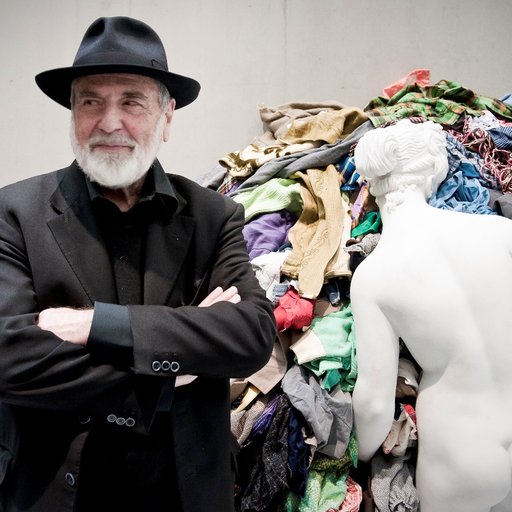Giovanni Anselmo
A self-taught artist who emerged after World War II, Giovanni Anselmo found refuge in redefining objects by way of natural events and energies. He was at the forefront of Arte Povera in Italy, working alongside Alighiero Boetti from 1968 to generate work that opposed modernism and embodied actions or ideas in unpredictable combinations of opposing materials. He often worked with unprocessed granite, counterbalanced by natural elements, to explore gravity and the power of similarly invisible forces. Anselmo’s work is grounded in challenging the dualities one considers everyday—general versus particular, culture versus nature, experience versus philosophy, finite versus infinite. His drawings and works with text address these conceptual elements directly with the linguistic edge of his Italian peers.
Anselmo has had solo exhibitions at Kunstmuseum Winterthur, Switzerland, Stedelijk Museum, Ghent, Palais des Beaux-Arts, Brussels, The Renaissance Society, Chicago, and Villa Medici, Rome. He has also participated in group exhibitions at institutions including the Museum of Modern Art, New York, Fondazione Prada, Venice, Castelo di Rivoli Museo d’Arte Contemporanea, Turin, and CaixaForum, Madrid. Anselmo participated in the Venice Biennale in 1978, 1980, 1990, and 2007, and in dOCUMENTA V (1972) and VII (1982). At the 44th Venice Biennale in 1990, he won …
A self-taught artist who emerged after World War II, Giovanni Anselmo found refuge in redefining objects by way of natural events and energies. He was at the forefront of Arte Povera in Italy, working alongside Alighiero Boetti from 1968 to generate work that opposed modernism and embodied actions or ideas in unpredictable combinations of opposing materials. He often worked with unprocessed granite, counterbalanced by natural elements, to explore gravity and the power of similarly invisible forces. Anselmo’s work is grounded in challenging the dualities one considers everyday—general versus particular, culture versus nature, experience versus philosophy, finite versus infinite. His drawings and works with text address these conceptual elements directly with the linguistic edge of his Italian peers.
Anselmo has had solo exhibitions at Kunstmuseum Winterthur, Switzerland, Stedelijk Museum, Ghent, Palais des Beaux-Arts, Brussels, The Renaissance Society, Chicago, and Villa Medici, Rome. He has also participated in group exhibitions at institutions including the Museum of Modern Art, New York, Fondazione Prada, Venice, Castelo di Rivoli Museo d’Arte Contemporanea, Turin, and CaixaForum, Madrid. Anselmo participated in the Venice Biennale in 1978, 1980, 1990, and 2007, and in dOCUMENTA V (1972) and VII (1982). At the 44th Venice Biennale in 1990, he won the Leone d’Oro Award for Lifetime Achievement.
Tate Gallery, London
Peggy Guggenheim Collection, Venice, Italy
Museu Colecção Berardo, Lisbon, Portugal
Centre Pompidou, Paris
Hammer Museum, Los Angeles, California
Walker Art Center, Minneapolis, Minnesota






